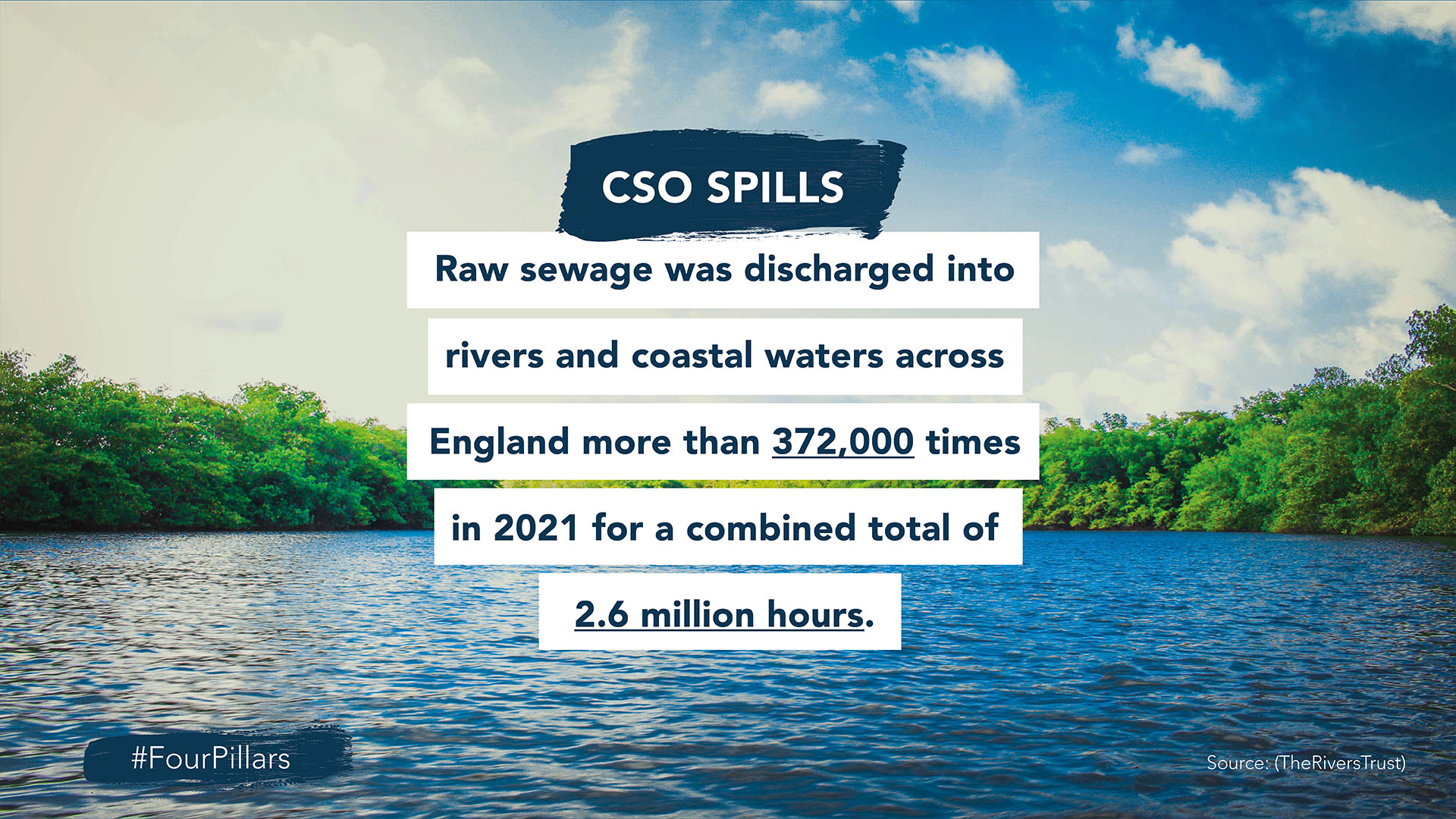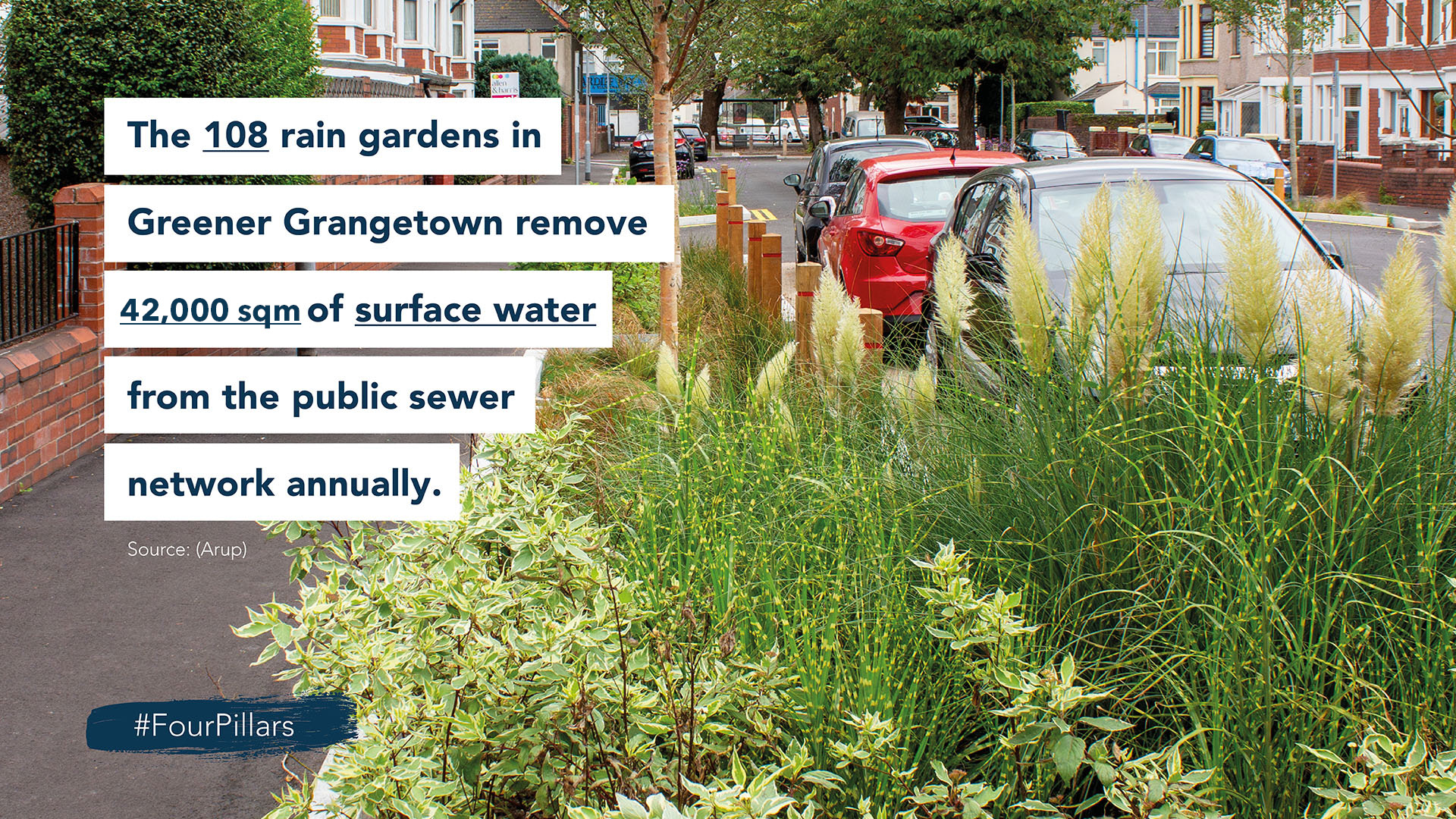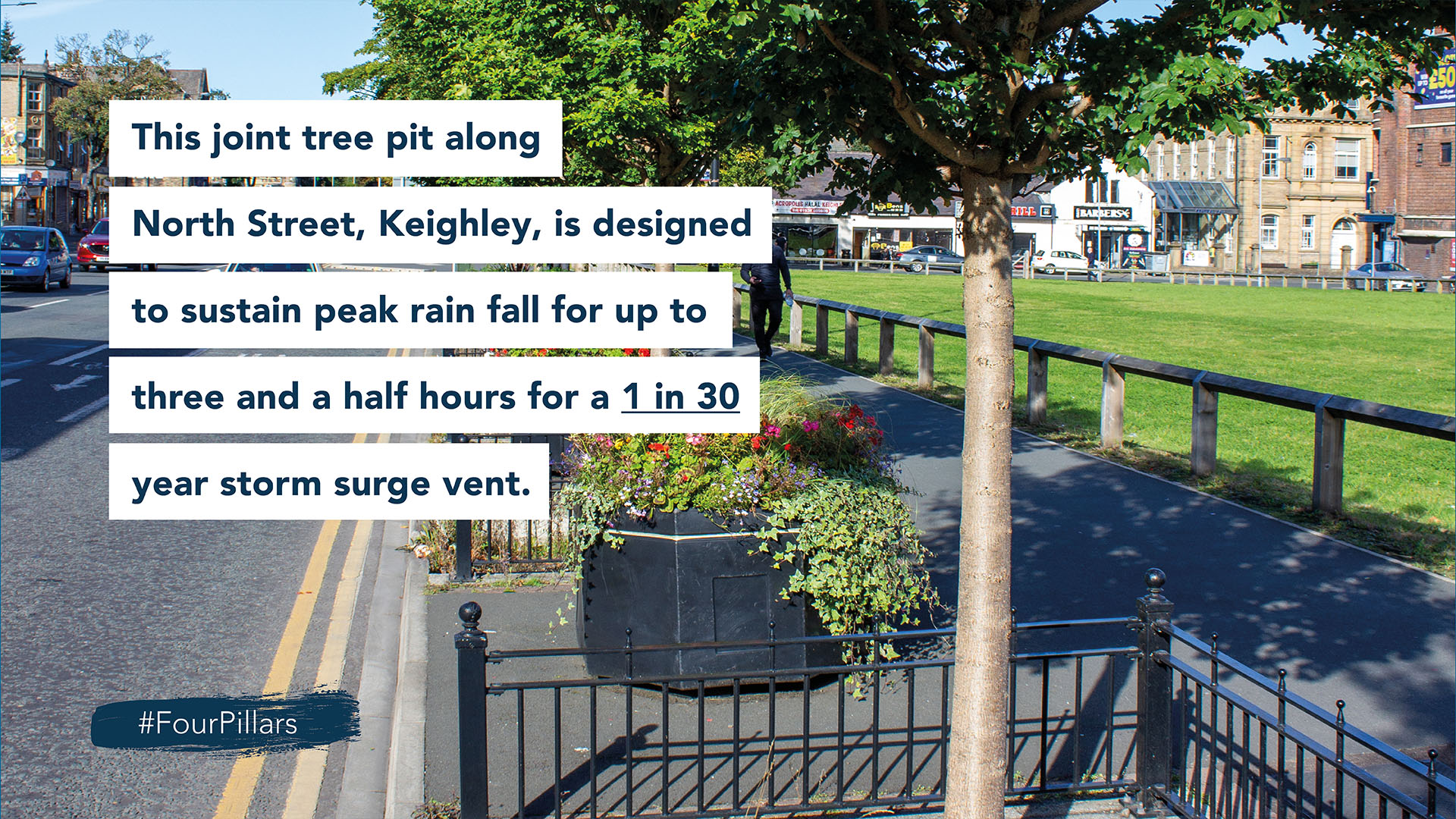Recent attention to sewage discharges into the UK’s rivers and beaches has highlighted the urgent need for sustainable interventions to mitigate flooding caused by Combined Sewer Overflows (CSOs). A recent report (Oct 23) presented the foundational evidence for an initiative aimed at mitigating sewage overflow spills in Wales. This comprehensive report delves into the financial implications and advantages associated with various policies designed to minimize the environmental impact resulting from sewer overflows and to decrease the overall occurrence of spills.

GreenBlue Urban, a pioneer in sustainable drainage solutions, is addressing this issue by emphasising nature-based solutions and offering innovative products. In this blog, we explore the challenges posed by CSOs, and how GreenBlue Urban’s interventions align with the push for environmentally friendly and effective solutions.
Raw sewage has discharged into rivers and coastal waters across England more than 372,000 times in 2021 for a combined total of 2.6 millon hours!
The CSO Challenge: Causes and Impacts
Sewage discharges have surged due to urban expansion, changing weather patterns, and ageing infrastructure. Combined sewer systems, where rainwater and wastewater share pipes for treatment works, rely on CSOs during heavy rainfall to prevent flooding. However, these discharges threaten public health, wildlife, and the environment. Despite the scale of the problem, fixing it is a complex, long-term challenge with implications for public health and increased costs.
Engineering vs Environmental Integration
The traditional engineering solutions involve storing storm flows in large tanks or separating foul and surface water. However, these methods have limitations, including high carbon impacts and time-intensive implementation. Combining engineered with nature-based solutions through blue-green infrastructure and sustainable drainage systems (SuDS) is the perfect solution.
Economic and Environmental Viability
Eliminating storm overflows is neither economically nor environmentally viable. The cost estimates for such a move range from £350 billion to £600 billion, leading to a substantial increase in household bills. A realistic approach to retain storm overflows but aims to reduce spill frequency is a must. GreenBlue Urban supports this by offering cost-effective and environmentally friendly SuDS products that contribute to reducing spill frequency and mitigating the overall impact.
Avoiding Quick Fixes
Quick fixes may inadvertently cause greater environmental damage. The UK government’s commitment to investing £56 billion between 2025 and 2050 to reduce discharges indicates a significant challenge. GreenBlue Urban advocates for carefully planned interventions that avoid increasing flood risks and emphasises the importance of data-driven decision-making. The installation of monitors in CSOs, scheduled for completion by the end of 2023, aligns with the need for smarter, data-informed solutions.
Defra and the Environment Agency will double the number of government funded projects which include nature-based solutions (NBS) by 2027 to reduce flood and coastal erosion risk.
Blue-Green Infrastructure
GreenBlue Urban’s commitment to blue-green infrastructure, with its innovative SuDS solutions promotes natural water management, including; tree planting, rain gardens green walls, and SuDS Planters. Along with support with permeable paving, These products reduce runoff, improve water quality, and contribute to the overall resilience of our of urban areas while enhancing biodiversity and urban aesthetics.

Addressing the challenges of CSO overflows demands a comprehensive and sustainable approach. GreenBlue Urban’s nature-based solutions play a crucial role in meeting these challenges, aligning with and contributing to the creation of flood-resilient and environmentally friendly communities. As the UK navigates this complex issue, collaboration between engineering, environmental, and public sectors is vital to finding economically and environmentally acceptable solutions for the benefit of all.



